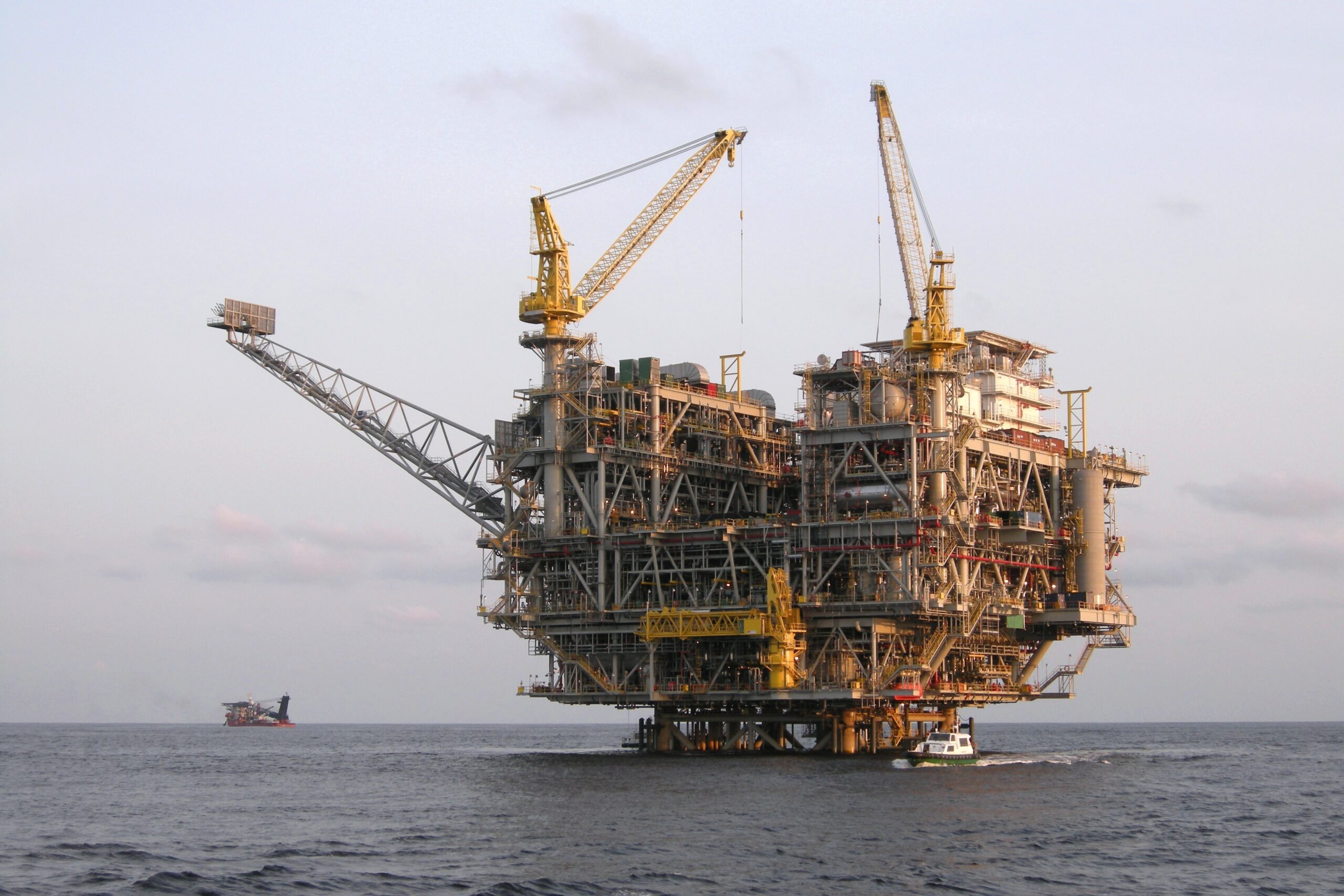-
Debunking the Patient Capital Myth: The Reality of China’s Resource-Backed Lending Practices
Last year, African Development Bank president Akinwumi Adesina called for the end of resource-backed loans (RBLs) for African countries, calling them “asymmetrical” and “non-transparent.” These loans—where governments pledge future resource revenues in exchange for infrastructure agreements—have been widely used across African countries with Chinese lenders playing a dominant role.
Among the most prominent examples of these loans has unfolded in the Democratic Republic of Congo (DRC). Despite being one of the world’s most resource-rich countries, the DRC also remains among its poorest. In his 2006 re-election campaign, Joseph Kabila announced his ambitious Cinq Chantiers (Five Construction Sites) infrastructure program—a key part of his post-war development strategy for the DRC.
The following year, the DRC government signed an enormous resources-for-infrastructure agreement valued at a total of over $9 billion with a consortium led by China Railway Engineering Corporation. It was a pact that Kabila hoped would bring his development vision to life. By 2009, after multiple rounds of renegotiation, a final agreement was reached. As part of the deal, Kabila allocated two mining licenses to the Chinese consortium. In exchange, the consortium agreed to invest $3 billion in the project and to secure $3 billion in infrastructure finance. The deal has proven contentious, however. Not only has its infrastructure component lagged, but Kinshasa has accused the consortium of fraud with regard to how it sells minerals and reports proceeds.
Much of the western scholarship on China’s capital portrays it as patient, or as having a long-term vision, due to a higher risk tolerance of Chinese banks compared to their Western counterparts. But in our own research, after digging deeply into China’s resource-backed loans, we found that Chinese capital is not patient.
Chinese banks are risk averse and they deploy resource-backed loans (RBLs, which are secured with the revenues of future resource extraction as collateral). These loans also help China acquire natural resources cheaply—and lock in markets. The result not only often leaves host countries footing a high bill but also facing constrained options when it comes to exploiting their natural resources.
Tracking Impatience
In a new paper published by the Boston University Global Development Policy Center, we analyzed Chinese loans committed between 2000-2021. Our findings indicate that, far from being patient, Chinese lenders often rely on hard-nosed risk-mitigation strategies. More specifically, we uncovered how risk mitigation tools employed by Chinese banks are disproportionately used in tandem, rather than in isolation. Chinese loans “backed” by natural resources are more likely to carry higher interest rates and to be covered by insurance—which is ultimately paid by borrowers. Ironically, therefore, while these measures are meant to reduce lender risk, they can heighten financial pressures on borrowers and exacerbate default risk, particularly in resource-dependent economies.
Tracking this “impatience” is vital because of the stakes involved. Overseas development finance plays a critical role in China’s global engagement. With massive assets backing it, the China Development Bank (CDB) held a staggering ~US $2.7 trillion in capital in 2022, and China Export-Import Bank had ~US $920 billion in 2023. Together, these financial giants have cemented China’s position as the world’s largest bilateral creditor.
By offering interest rates that undercut those of private lenders, these institutions can grow China’s political influence, build export markets for its domestic firms, and secure vital natural resources. Yet, how they evaluate risk—especially when they lend to governments that lack credit ratings or alternative creditors—continues to confound researchers and policymakers alike.
Besides assuming Chinese capital is patient, many western analyses of Chinese investments explore specific risk mitigation strategies—such as the use of escrow accounts as collateral, insurance, co-financing with other international lenders, and commodity-backing—but largely discuss them in isolation.
Resource-backed loans epitomize how China mitigates political and financial risks in its sovereign lending practices. They account for nearly 20% of Chinese developing country loans by value.
In addition to reducing risk, RBLs are a critical mechanism for resource acquisition. These particular sorts of loans issued by the CDB alone accounted for 17-18% of China’s oil import contracts for 2012.
For governments heavily reliant on Chinese RBLs for financing, however, these loans can constrict options for managing future resource revenues. A Reuters special report revealed that RBLs signed by Ecuador’s government with CDB put 90% of the country’s 2013 oil exports under the control of Chinese firms.
Risky Resource Bets Pay Off
Resource-backed loans are far from new, and the origin of the concept lies far from China. In the 1840s, newly independent Peru was plagued by political turmoil and economic uncertainties—and largely shunned by financial markets. To secure financing, it began using guano, a highly sought-after fertilizer in Europe, as collateral for foreign debt. This strategy enabled Lima to access foreign finance and regain solvency.
Since then, other “risky” countries have used resource-backing to secure finance. During the 2011 Libyan Civil War, one of the country’s rebel groups secured substantial financing by pledging the country’s oil reserves as collateral. This echoed another episode from decades prior, when Angola’s Dos Santos government secured 48 oil-backed loans during the country’s bloody civil war. Even after the conflict ended, the practice persisted.
It also was in Angola that China first emerged as a major provider of RBLs. In 2004, two years after the war ended, China Eximbank extended its first oil-backed loan to Luanda. According to AidData, 123 of the 350 Chinese loans to Angola between 2004-2017 were resource-backed. The practice ensured that Chinese firms won many of the construction contracts tied to Angola’s post-war reconstruction.
Moreover, RBLs helped secure vital natural resources to fuel China’s economic growth. Between 2004 and 2014, Angola supplied 15% of China’s imports, with total crude shipments exceeding US $200 billion.
RBLs Prove Expensive for the Global South
The “Angola Model” became a blueprint for Chinese RBLs worldwide, including those in which resource revenues are used directly for loan repayment. The China Eximbank official who was the architect for the Angola Model lauded its success, but also noted it did “spawn a number of corrupt transactions.”
While resource-backing plays a crucial role in risk mitigation, however, it does not make these loans inherently “cheaper.” In fact, our models demonstrate that, all else being equal, Chinese RBLs carry interest rates one percentage point higher than non-RBLs. Ironically, while these strategies aim to reduce risk exposure, they also can inadvertently heighten debt-service pressures on borrowers and exacerbate default risk, particularly in resource-dependent economies.
Our findings challenge the common notion that Chinese state capital is uniquely more “patient” or risk-tolerant compared to global private capital. In reality, Chinese lenders employ rigorous risk mitigation strategies akin to those used in the private sector.
As long as Western financiers abstain from providing much-needed infrastructure finance to resource-rich countries with high levels of risk, China will remain their most readily available source of financing.
David Landry is an assistant professor of political economy at Duke Kunshan University.
Keyi Tang is an assistant professor of international relations and global governance at the ESADE Business School.
Header Photo: Oil rig platform off the coast of Angola, photo courtesy of Christopher Poe, shutterstock.com
Sources: AidData; BBC; Boston University; Brookings; Cambridge University Press; China Development Bank; Economic Policy; The Ex-Im Bank of China; Foreign Policy; Jiangang Blogspot; Journal of Economic History; ODI Global; Oxford Academic; Penguin; Reuters; Semafor; The University of Chicago Press
 A Publication of the Stimson Center.
A Publication of the Stimson Center.








